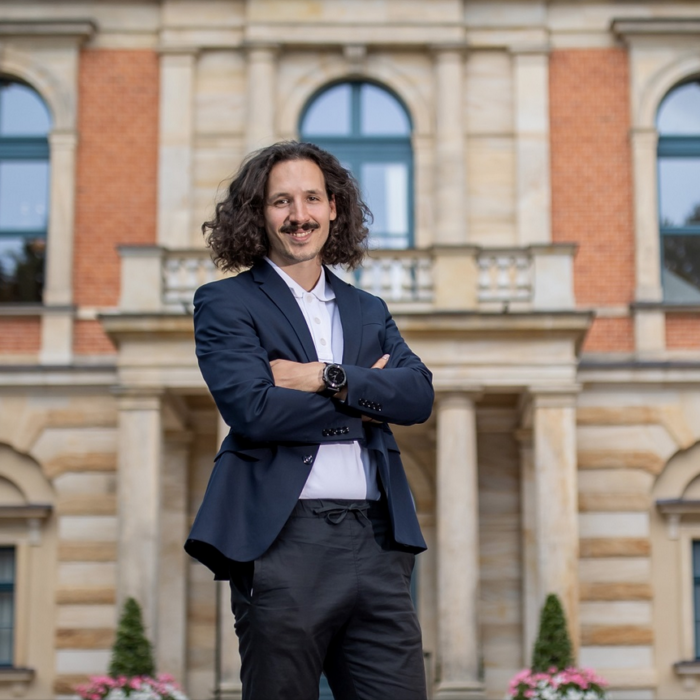
Q & A: Carlos Simon on his New Piece ‘Good News Mass’
By Francisco SalazarOn April 17 & 18, 2025, the LA Philharmonic is set to present Carlos Simon’s “Good News Mass.”
The work is a transcendent musical experience merging gospel and classical traditions, spoken word, and visual art.
Composer Carlos Simon has become one of the most important voices in classical music, becoming the current Composer-in-Residence for the John F. Kennedy Center for the Performing Arts and frequently writing for the National Symphony Orchestra and Washington National Opera. He also holds the position of inaugural Composer Chair of the Boston Symphony Orchestra.
He has also been commissioned by the San Diego Symphony Orchestra, Washington National Opera, New York Philharmonic and Bravo! Vail, Minnesota Orchestra, American Ballet Theatre, and Detroit Symphony Orchestra.
OperaWire: What was your inspiration for writing Good News Mass?
Carlos Simon: I come from three generations of Black Pentecostal preachers. Church was my life during my childhood. As my father was the pastor, we were always at church serving consistently. I was tasked with playing the organ and even writing songs for Sunday morning service. This piece is an attempt to go back to my roots. Every Sunday, I would see my father try to deliver good news to the congregation who might have been struggling with life. So in that light, I wanted to deliver good news through music, which is all about love– the love of God.
OW: Can you explain the structure and why you chose to put it in three acts?
CS: With libretto by Courtney Ware and poetry by spoken word artist Marc Bamuthi Joseph, this work navigates the deep waters of human experience—loss, thanksgiving, joy, and hope— asking us to reflect on the divine presence in life’s struggles and triumphs. Infused with the rich traditions of African American spirituality, Good News Mass elevates the sounds of praise, storytelling, and supplication into a transcendent musical experience. Good News Mass explores the ups and downs of being human and finding God in the midst of it all. What does it mean to question the existence of God? Where is God during our seasons of loss? How is God experienced in times of joy and hope? The composition is both deeply personal and universally resonant, offering listeners a liturgical journey of introspection and celebration.
OW: Tell me about how you blended musical styles for this piece and why was that something you decided on?
CS: I pride myself on being able to weave together diverse musical idioms by combining gospel harmonic syntax, choral grandeur, spoken wordsmithing, and orchestral brilliance. Moreover, a unique feature of Good News Mass is its emphasis on orature, that is, the oral literatures central to Black religiosity. Joseph’s poetry recalls the West African griot tradition, enriching the performance’s narrative depth. This storytelling is amplified by visual art from filmmaker Melina Matsoukas, creating a multi-sensory experience that bridges the sacred and the contemporary. The multi-genre soloists, spoken word artist, and choir infuse the performance with the textures of traditionally versatile “Black church” worship: Hammond B3 organ, congregational singing, gospel choir antiphony, and altar call zeal.
OW: Tell me about your collaboration with the LA Philharmonic and why was it the perfect place to world premiere the piece.
CS: It has always been a dream of mine to write a piece for the LA Philharmonic. Gustavo Dudamel and the orchestra have been champions of new music. I have admired any orchestra (or artist) that can be multifaceted in their musical offerings, and the LA Philharmonic does that. While the LA Philharmonic is the lead commissioner, Good News Mass will go on to be performed by the Boston Symphony Orchestra, the Sphinx Symphony and the National Symphony.
OW: What do you hope audiences take away from this work?
CS: Simply put, I hope that people feel love.


